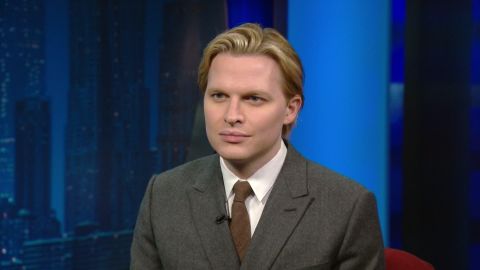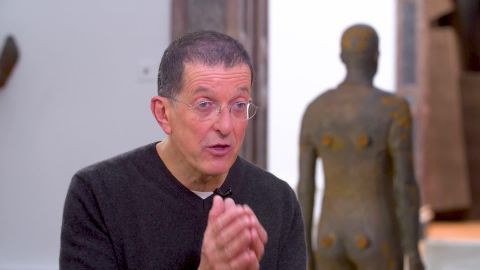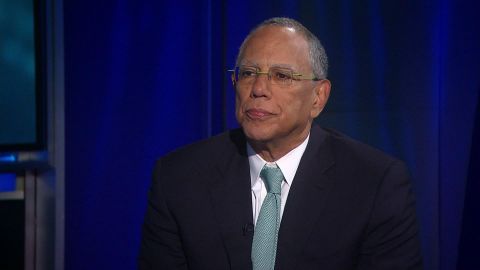Read Transcript EXPAND
CHRISTIANE AMANPOUR: We’re sitting in the room which I think you call this particular room Lost Horizon?
ANTONY GORMLEY, SCULPTOR: I do, yes.
AMANPOUR: And it’s all floating and fixed to the walls and the ceilings. How on Earth did you even get it installed?
GORMLEY: Well, yes. I – people are very intrigued by the engineering, but that’s obviously not the point.
AMANPOUR: But it’s part of the gee-wiz nature of this whole exhibition which then goes to what you hope to communicate.
GORMLEY: Yes, I think you have to stop people in their tracks and ask them to think again about what’s possible. And hopefully that opens kind of the doors of the imagination and they start running with it for themselves. I say to everybody that comes, you know, you are the subject of this exhibition, and you might say even in this room where there are 24 industrial fossils, you know, of me, I think that this room is really asking you to reorientate yourself in space, and I think that goes for the whole show. It is really about making propositions in the space that hopefully catalyze that space and make the subject, which is the viewer, hyperaware of his or her relative position, and that’s absolutely true in here.
AMANPOUR: And what I think is amazing is the beginning before you even get into the gallery in the courtyard, there’s that tiny, tiny, little baby which even looks smaller than I expected from the pictures I saw before coming in. And you’ve just laid it on the ground and it is so vulnerable. Tell me what you are doing with that.
GORMLEY: I think I just wanted to make the point that art is useless if it doesn’t, in some way, energize life. Here we have a 6-day-old baby, my daughter, Paloma. I didn’t mold her. I hasten that. And I guess I just wanted that to be the initiation of a sequence of thoughts about human futures, about our relationship with the planet. So here is a baby almost removed from the chest or the stomach of the mother and placed onto the Earth. And I think the baby is immensely peaceful. It seems to be at ease, and yet at the same time, as you say, it’s extremely vulnerable. And seeing it straight off Picadilly where the buses roar past, I guess that’s just asking a question like Greta Thunberg asks, you know, what is our part in making sure that our children and our childrens’ children’s future is as rich and supportive as ours.
About This Episode EXPAND
Executive editor of the New York Times Dean Baquet sits down with Christiane Amanpour to discuss the challenges of covering the Trump administration. Ronan Farrow tells Michel Martin about his new book “Catch and Kill” and his reporting on the #MeToo movement. Artist Antony Gormley takes Christiane on a tour of his latest exhibition at the prestigious Royal Academy in London.
LEARN MORE


